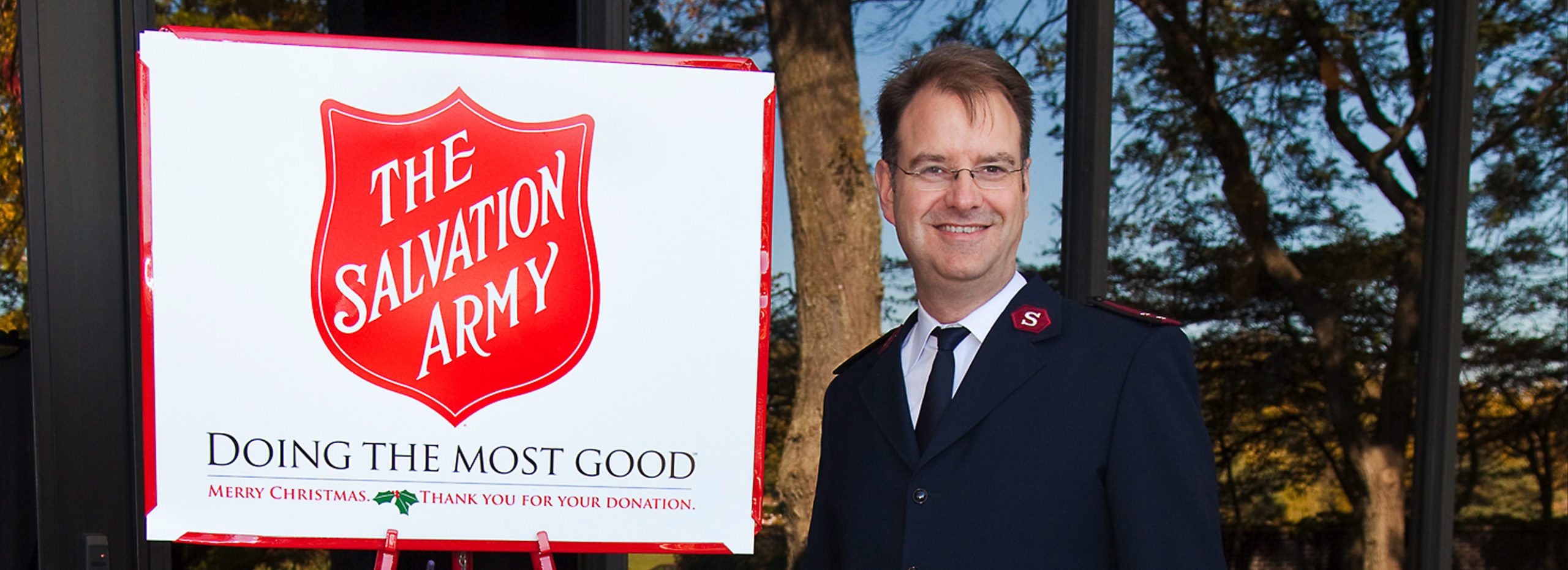
Kettles for the 21st Century
The Red Kettle Campaign progressed with modern times. Adapting to shopping and donating trends in the 21st century, the Red Kettle went digital. In 2000, The Salvation Army debuted online donation options, but by 2008, thanks to two officers in the Western Territory who prototyped a kettle-stand credit card machine, donors could donate with credit instead of cash. In 2009, this technology was adopted and expanded to thirty kettle stands across the Central Territory.
In 2020 due to the coronavirus pandemic, kettle stands became contactless, allowing donors to contribute by scanning a QR code on the placard with their smartphone. This technology, along with other safety measures, met the needs of the time. This year also saw fewer bellringers and significantly reduced foot traffic as shopping patterns responded to the pandemic. Virtual Red Kettles allowed cyber bellringers to create online fundraisers and solicit donations through the internet and social media.
As technology evolved, The Salvation Army implemented new ways for donors to give using a high-tech or low-tech options.
Click image to enlarge




